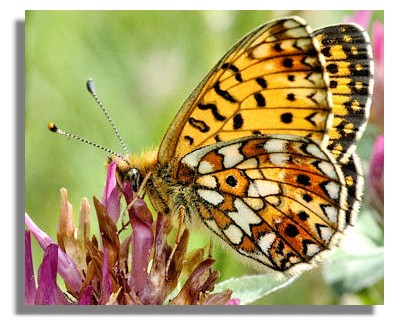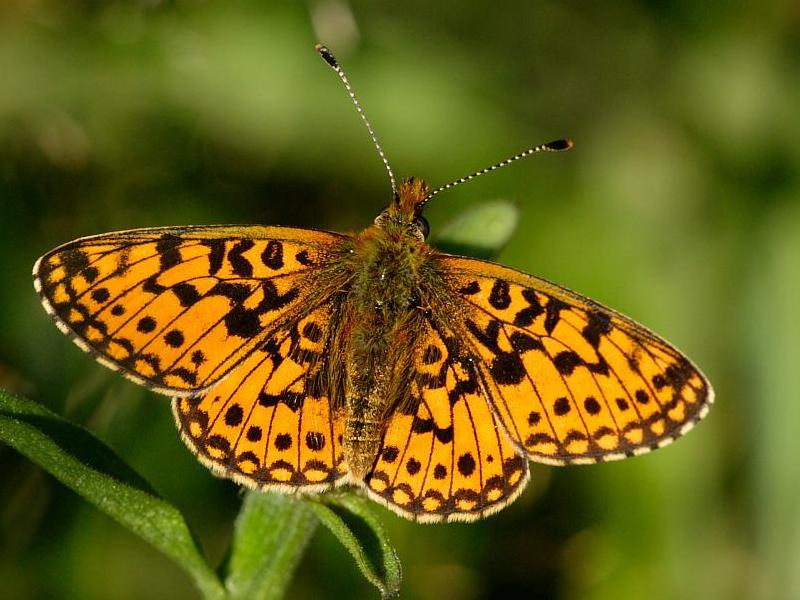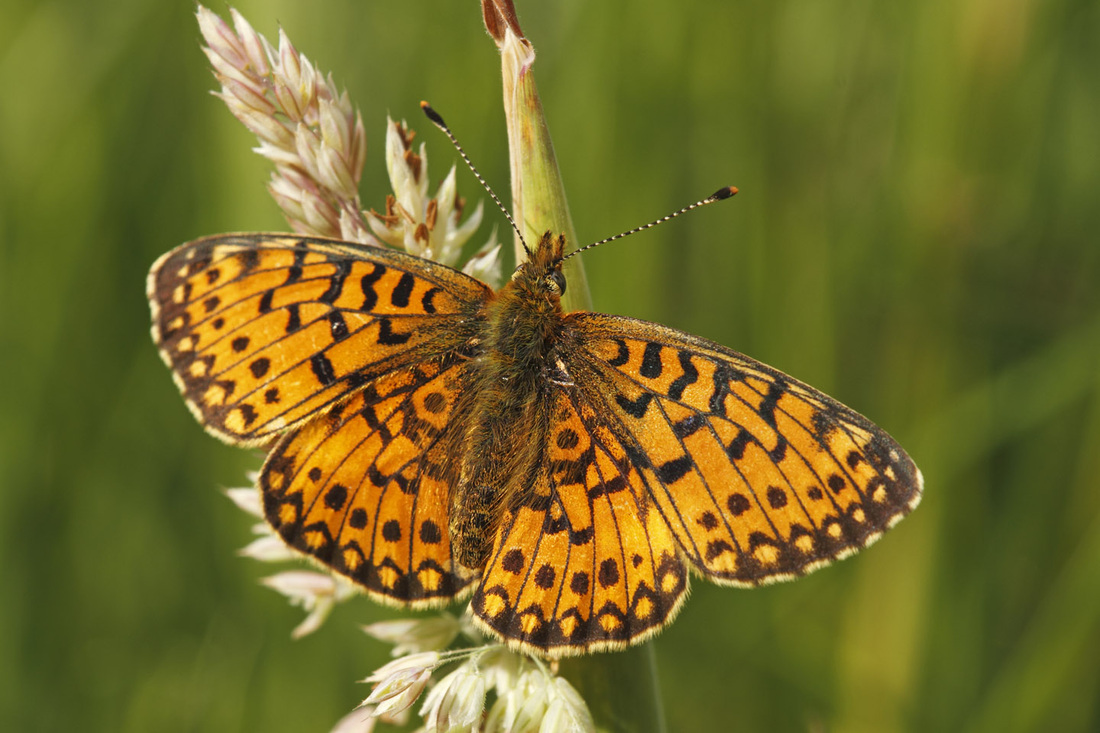Small Pearl-bordered Fritillary
Braunfleckiger Fritillary ( Boloria selene )
The Braunfleckige Fritillary ( Boloria selene ), also known as swamp meadow fritillary is a butterfly ( butterfly ) of the family Nymphalidae ( Nymphalidae ). 2013, he was named by the environmental foundation BUND to butterfly of the year.
- 2.1 Flight times and caterpillars
- 5.1 Notes and references
Features
The moths reach a wingspan from 28 to 38 millimeters. They have orange wing tops, which have a black pattern. You have the black outer edge adjacent angle spots behind those black dots are lined up. On the hind wing approach can be found each a black dot of the similar pearl-bordered fritillary ( Boloria euphrosyne ) clearly distinguishes him, in the rest of the pattern is black but unremarkable. On the underside of the hind wings have a black dot, which is larger than the euphrosyne of B.. In addition, they have a cream-colored binding with three weakly demarcated pearly spots. Have side light ( albino ) copies, as the base color white instead of orange there are also darkened ( melanistic ) animals that are colored dirty -orange.
The caterpillars are about 22 mm long. They are dark gray in color and have a black and brown slightly bright marbling. Furthermore, they have brown spines that are light on top. Behind the head they wear a bulb -like front-facing spike pair.
Similar Species
- Pearl-bordered fritillary ( Boloria euphrosyne )
Occurrence
They occur in Europe, except in the south, in Russia, Mongolia, Sakhalin, Korea and North America. They are widely used in Central Europe and not rare. They are found particularly on wet meadows and marshes, but sometimes humid, bright spots in woods and dry meadows.
Flight times and caterpillars
The animals fly in two generations per year from early May to late June and from mid-July to early September. In cooler latitudes and higher altitudes they fly in one generation from mid-May to early July.
Food of the caterpillars
The caterpillars feed on the leaves of dog - violet (Viola canina ) and marsh violet ( Viola palustris ), but also from other violet species.
Development
The females lay their eggs singly on the underside of the forage plants. The caterpillars of the second generation overwinter and need next spring still time to develop before they pupate.










